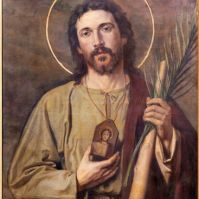 Pope Francis just held a ceremony at Vatican City to canonize the sainthood of Mother Teresa. Tens of thousands of people were in the Vatican to attend the service, and it was streamed via online channels around the world for millions more to watch. Mother Teresa is unarguably one of the most iconic figures of charity. When she died in 1997, just a few days after another iconic figure, Diana, Princess of Wales, the world went into mourning for these two women. How did Mother Teresa go from a woman who gave her life to the poor to becoming Saint Teresa of Calcutta?
Pope Francis just held a ceremony at Vatican City to canonize the sainthood of Mother Teresa. Tens of thousands of people were in the Vatican to attend the service, and it was streamed via online channels around the world for millions more to watch. Mother Teresa is unarguably one of the most iconic figures of charity. When she died in 1997, just a few days after another iconic figure, Diana, Princess of Wales, the world went into mourning for these two women. How did Mother Teresa go from a woman who gave her life to the poor to becoming Saint Teresa of Calcutta?
Before She Was a Nun
The woman we know as Mother Teresa was born in Albania in 1910. Her parents named her Anjezë Gonxhe Bojaxhiu. She knew from a very young age that she wanted to serve in a religious capacity. When she was 18, she left her home to go to a convent in Ireland to become a missionary. After she learned English, she went to India to begin her novitiate and work with the locals. When she took her first religious vows, she took on the name of Teresa, after the patron saint of missionaries, Thérèse de Lisieux. After almost 20 years of teaching, she left the convent and went to live among the poorest in Calcutta.
At first, Teresa had to beg for supplies and food to help the poor, but after a couple of years, the Vatican approved a congregation, which became the Missionaries of Charity. She and a few other women cared for the hungry, the homeless, the crippled, the orphans and the unwanted members of Indian society. This congregation grew from 13 members in 1950 serving just Calcutta to over 6,000 men and women worldwide serving the poor around the world.
How to Become a Saint
In the Catholic Church, there are five steps to becoming a saint.
- Wait five years after death. The Pope does have the authority to set aside this waiting period. Pope John Paul II began the process of canonization for Mother Teresa in 1999, just two years after her death.
- Become a "servant of God." The individual's life is studied to determine if he or she lived as a servant of God. If the person passes this test, the church moves to the next step.
- Show proof of a "heroic virtue." This test investigates the candidate's holiness. Did the person bring others to a life of prayer through his or her actions? If the Pope determines that this is the case, he bestows the title of "venerable" on this individual.
- Verify a miracle attributed to the individual, except in the case of a martyr. This step is called beatification, and once complete, the candidate is given the title of "blessed." In Mother Teresa's case, she was beautified in 2003, but the miracle attributed to her was controversial. Some said it was a hoax, while others believe Mother Teresa cured a woman of cancer.
- Canonization requires a second miracle, unless an individual is a martyr. Last year, Pope Francis recognized another miracle that was attributed to Mother Teresa, that of a Brazilian man who was healed of brain tumors. Following the second miracle, a ceremony is held that relates the history of the individual's life. Prayers are said. The Pope declares the person a saint.
Saint Teresa of Calcutta certainly did a lot for the poorest of the poor. In 1979, she was awarded the Nobel Peace Prize for her work, but she was internationally recognized as an instrument of God's work well before that major event. Her life meant something, and Pope Francis recognized her good works.



